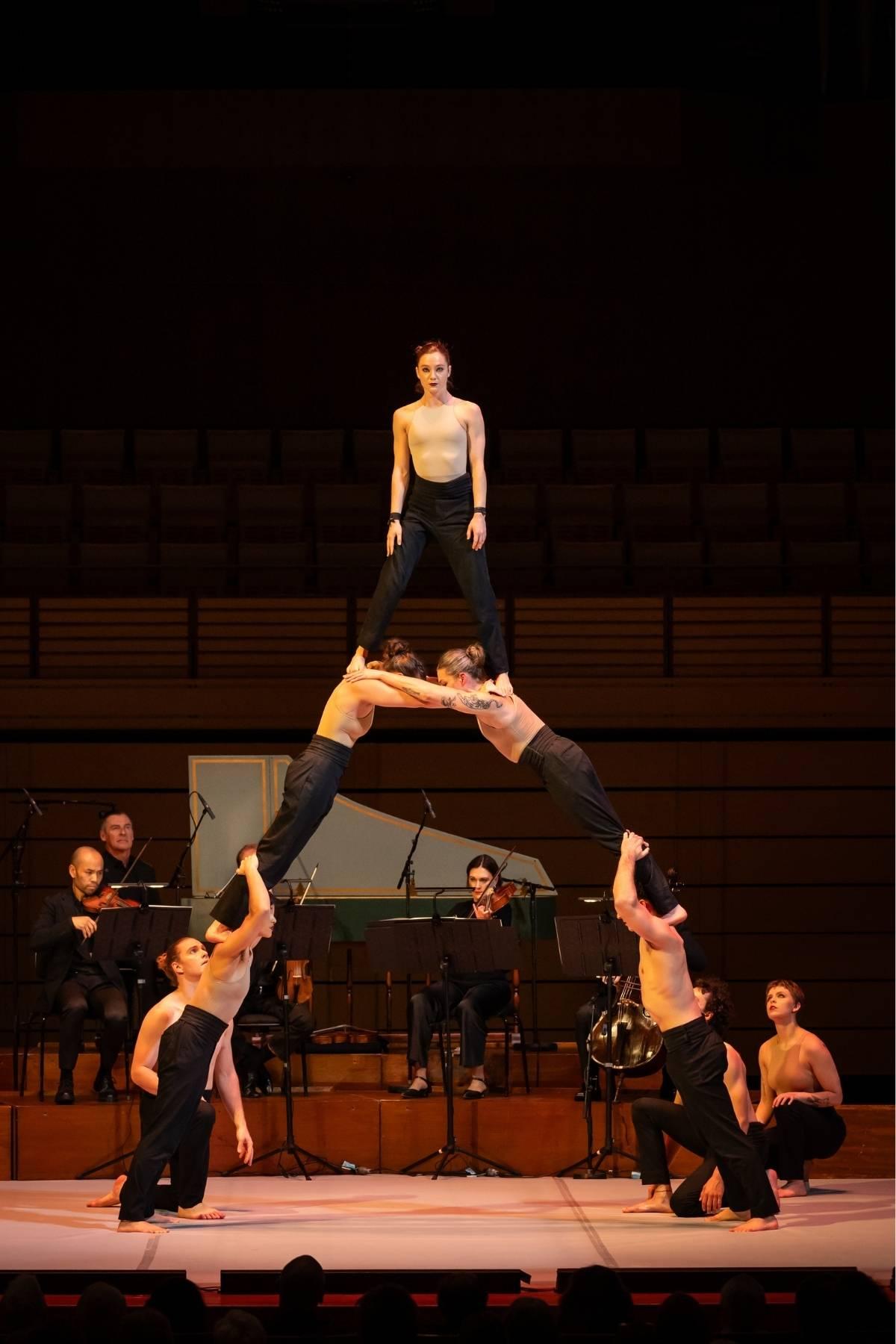Lauded for their passionate interpretations of oft-overlooked works of the Baroque period, the Australian Brandenburg Orchestra has earned a solid reputation for bringing unfamiliar pieces to a broad contemporary audience.
The ensemble’s latest venture takes their technical skill and artistic flexibility to a new dimension, with the addition of Brisbane-based performing arts company Circa and their choreography showcase inspired by Bach’s ‘The Art Of Fugue’.
Represented by a sparse ensemble of just five players, the Brandenburg Orchestra drew a rich, crisp canvas of sound from their tight cluster at the back of the Melbourne Recital Centre on Sunday evening. The main bulk of the stage, meanwhile, was taken up by a large dance mat, making for a novel addition to the venue’s usual onstage elements.
The degree of anticipation for the event was clear from the moment one walked into the lobby and gradually inched through the packed crowd to their seat. An event promising dynamic acrobatics and impressive displays of strength and balance, curiously observed through the prism of a late-Baroque string quartet, audience members of all ages were chattering excitedly right up to the moment the lights went down.
Commendable on all counts – the Brandenburg Orchestra for their clean, precise performance; and Circa for their incredible feats of speed, poise and athleticism – the assembly did not, however, prove a satisfying union. With each short, bravado dance routine set to different lines of Bach counterpoint, the dancers upheld a disjointed pace across the evening that created some uneasiness against the rather unchanging and glamorously sedate tempo of the selected music.

The lively, at times fantastical shape and propulsion of Circa’s choreography – variously seeing performers stand atop one another’s heads with a single foot, or being suspended above the shoulders of two performers below and then being tossed to the ground in a controlled ribbon of splayed limbs and widespread arms – did not recognisably find melodic footing within the gentle, billowing quavers of the programmed Bach fugues.
Lengthy passages for harpsichord, drawing a soft bloom of ascending notes with no real gusto behind them, often fell out-of-step with the muscular leaps and rolls of the dancers whom had supposedly designed their movements around this specific musical accompaniment.
There were numerous instances in which all seven performers of the dance troupe were moving at one time, flooding the stage with a riot of explosive, soundless leaps and muscular flips, and yet the accompanying music failed to echo this sense of vivacious energy.
While a compelling attempt to fuse modern dance with totemic works of classical canon, the misbalanced tempo of Bach’s fugues and Circa’s impressive, inventive choreography proved a showcase of two great talents side-by-side rather than in tandem.






